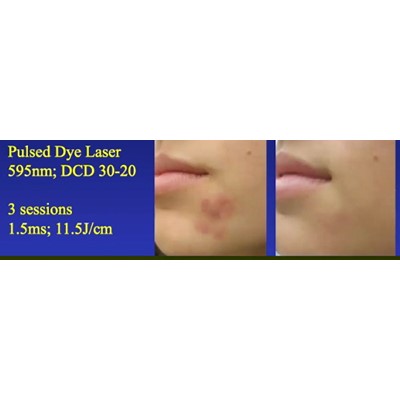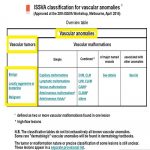Webinar 26 June 2021 – Laser and vascular malformations
Laser and vascular malformations
Dr. Albert Wolkerstorfer

We organized this public webinar on June 26, 2021 with the topic ‘laser and vascular malformations’ by Dr. Albert Wolkerstorfer (Amsterdam University Medical Centers).
In his webinar, Albert Wolkerstorfer discusses laser treatment of vascular malformations. Dr. Albert Wolkerstorfer is a dermatologist at the AMC (Amsterdam Medical Centre) specialising in pigmentation disorders and laser treatment of the skin. In the webinar, he presents many examples of vascular disorders with photos of before and after laser treatment.
Best results in the face
In general, laser treatment of vascular malformations in the face gives the best results. The further out to the extremities, the legs and arms, the poorer the results. Treatment of deep-lying venous malformations with laser generally gives no improvement. Starting laser treatment at a very young age sometimes gives better results. As for CMTC, it is better to wait and see how it develops. Sometimes the spots disappear on their own or become less visible. It is therefore questionable whether laser has added value for CMTC.
Selective tissue destruction
The first lasers were introduced in 1960, but they could not heat very specifically a part of the tissue. From 1981, it became possible to selectively destroy a piece of tissue while sparing the surrounding tissue. This is what is still done today. The laser light passes through the upper layers of the skin and is absorbed into a specific piece of tissue, heating it up and destroying it. The body clears away the destroyed tissue.
Correct wavelength of the laser
The laser must have the right wavelength to be absorbed by the target tissue. The target can be melanin, a naevus (such as a birthmark), vascular lesions such as a wine stain, excess hair or a tattoo. The pulse (duration of the radiation) should be short enough to destroy the target tissue but not too long so that the surrounding tissue is spared. The energy of the laser pulse (= intensity (J/cm2)) should be high enough, but not too high, to avoid side effects. The practitioner can choose the size of the area to be treated and he can also choose a certain degree of cooling (with cryogen spray, cool air or cooling with a metal plate) to protect the surface skin.
Adapting laser settings to the individual
Based on the visible changes after a short test treatment with the laser, the laser settings can be adjusted again. There is no standard laser setting for certain conditions. The settings must be adjusted in each individual case in order to obtain the best results.
By choosing the right wavelength, the target tissue can be destroyed. There are lasers (He-Ne and Ar+) whose radiation is specifically absorbed by blood (vessels). The PDL (pulse dye laser) is also a classic laser for the treatment of blood vessel malformations. Melanin (dark skin colour or tanned by the sun) absorbs this radiation even better. With these skin types, however, there is a higher risk of side-effects.
The Alexandrite laser (755 nm) is also used. Here, one often has to wait a little longer for the immediate response of the skin. Therefore it takes a little longer to find the right settings.
The thickness of the skin varies considerably over all parts of the body. The head and neck area have much thinner skin than the cheek, for example. In thinner skin, side effects are more likely to occur and the final result will also differ.
Treatment of port wine stains
The treatment of port-wine stains with laser has shown little increase in good results over the years. The results are variable, but generally speaking, they are reasonable to good. Starting younger is sometimes better, but sometimes not. General anesthesia is a problem in young children; it can cause trauma. It is therefore recommended to treat young children with laser only in severe cases.
Combination cases, e.g. port-wine stain in combination with underlying venous malformation, give little improvement.
For port-wine stains, PDL is the gold standard, but deep-lying stains cannot be treated well with PDL. The Nd:YAG laser (neodymium-doped yttrium aluminum garnet, 1064 nm) goes deeper, but the risk of side-effects is greater.
Video (members only)
Do you want to watch the video? Become a member and get access to all info on our website.








